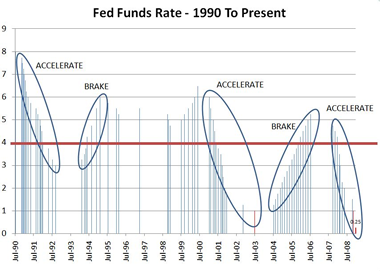Global Warming Without New High Temperature Extremes?
SEARCH BLOG: GLOBAL WARMING
If increasing frequency of new high temperature extremes is an indicator of global warming, how can such warming be taking place if the expected increase in high temperature extremes is not occurring?
Dr. Scott Robeson at Indiana University is considering further investigation of the historical dataset of high and low temperature extremes to see what may not be apparent in the raw data which was discussed over the last two days. That may take a little while, however.
Any analysis of weather over 120 years has limitations when you start considering the variations in the number of observation sites, the methods for collecting data, and the accuracy of the equipment involved. Thus, it is possible that data from the 19th and early 20th century are not good starting points for a dataset of temperature extremes. Of course, the same objection could be made regarding the calculation of average temperatures which is far more complex and, on which, claims of global warming are being made.Meanwhile, I've prepared two stylized charts (click on them to enlarge) that show mean (average) temperature increasing consistent with the range of temperatures increasing and resulting in many more high temperature extremes than previously... not indicated by the raw data for temperature extremes for the past 120 years.
>

And, in the second chart, mean (average) temperatures increasing while high temperatures remain relatively steady resulting in some record high temperatures, but not more than experienced at various times historically... as indicated by the raw data for temperature extremes for the past 120 years.
>

The only way the lower chart would seem to make sense with current IPCC thinking about CO2 as the main driver of overall warming effect, is by minimizing the heat loss during the night while having little impact during the days. This would result in more moderate northern climates and not much impact in tropical areas. This is an issue for the modellers.
I did not consider a third alternative where the range narrows by temperatures at the top falling somewhat and temperatures at the bottom rising rapidly, which seems highly implausible.
I'll let the climatologists, geologists, geographers, et al, fight it out from this point on.








